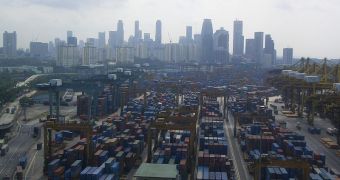Urbanization has been correlated for the first time with a growth in storm water run-off in Singapore, according to a report issued by an expert panel. Experts involved in this project think rooftop gardens are the perfect asset in overcoming devastating flood risks.
Nowadays, modern architecture has to respond to many challenges. The green trend seeks to combine sleek design, highlighting the connection between people and vegetation, with increased utility, while also safeguarding homeowners from the effects of natural disasters.
In this case, researchers have established that green roofs play an important part, minimizing damages; therefore, they are trying to convince Singapore authorities to proclaim them “mandatory” for every new and retrofitted building, in an attempt to protect people and businesses.
Porous pavements, storage tanks and rooftop gardens are considered a trust-worthy ally in lowering flood risks.
"We would like regulations brought into Singapore which require new developments to install source-controlled measures, so that the impact of development is mitigated.We also believe there's potential of retrofitting these measures to existing buildings," affirmed Professor David Balmforth, executive technical director of MWH UK, an engineering firm.
Currently, 12 representatives from the panel formed after devastating floods and heavy rain caused chaos in Singapore, are struggling to convince the government to favor the implementation of green rooftops.
The team of experts has indicated that the harmful effects of urbanization can be minimized while relying on weather modeling as well as a series of improvements in infrastructure.
Since all these features would require significant financial support, easy-to-follow steps, like building rain gardens, better storage tanks and porous pavements appear to be the best options currently available.

 14 DAY TRIAL //
14 DAY TRIAL //